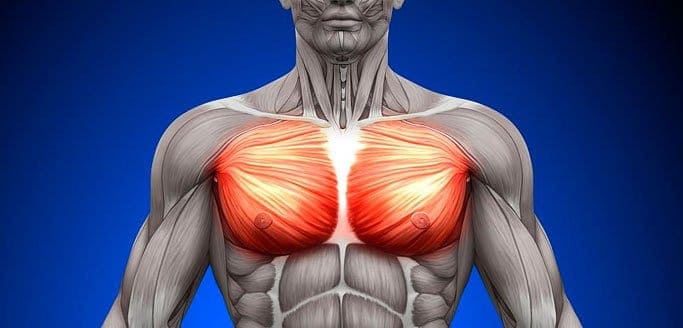March 8, 2024

A trigger point is basically a sensitive area of the body that can lead to pain when directly injured. Trigger points in the Pectoralis major muscle can be particularly painful and worrying due to the fact that they so closely replicate the symptoms felt with a cardiac arrest. To better understand why, you should first know more about what the Pectoralis major muscle is and how these trigger points work.
The Pectoralis major muscle basically encompasses the majority of the chest. The muscle is used on a regular basis by anyone that swings a gold club or tennis racket. With the rapidity of this motion, the muscle can become injured and cause a wide variety of symptoms that can feel much more severe than they actually are.
There are three portions of muscle fibers that make up the Pectoralis major. The injury of any of these fiber groups can cause the trigger points to be activated. Unfortunately, when these points are triggered, the symptoms associated with them can make it feel as though you’re experiencing cardiac arrest. Being able to identify what’s causing your pain will keep you from overreacting.
There are three of these points spread throughout the Pectoralis major muscle. One of them is located towards the center of the chest and is basically a cluster of points close to one another. Two of these points are located towards the clavicle, and typically cause a lot of pain in the shoulder and along the length of the arm. This pain can even extend to the fingertips if severe enough. There are a few additional points that can be triggered inside the muscle, but they very rarely occur when compared to the main three.
There are a number of symptoms that you will go through when this condition starts to present itself in your Pectoralis major muscle. Chest, shoulder and arm pain will occur depending on which portion of the muscle is affected. This pain can range in severity. If the pain is present on the left side of the body, it’s important to understand that the pain you feel is very similar to what a person will go through when experiencing a cardiac arrest. In fact, you should believe that you’re suffering from a cardiac arrest until a doctor rules it out in this situation.
Along with the standard pain mentioned previously, you might also experience pain in the middle portion of the back at the same time. Breasts can also be affected by this condition. Sensitivity, pain and enlargement are just a few of the ways in which breasts can be affected. Many people that go through this injury will experience a sort of constriction in the chest that makes it difficult to breath. The motion of your arms when being spread could also be restricted by this issue. It’s important to understand that you can go through any number of these symptoms, either separately or all together. Once you’ve noticed these symptoms, it’s essential that you immediately have them diagnosed by a doctor in order to rule out a cardiac arrest.
There are plenty of causes for this condition, as a trigger point can be activated by a number of activities. If you’ve sat in front of a computer for a lengthy period of time, a slightly hunched posture could lead to the activation of a trigger point and the development of several of the aforementioned symptoms. Using a power saw or lifting heavy objects might also cause a flare up. Additional causes that you should be aware of include muscle fatigue in the Pectoralis major, large amounts of anxiety and the pain derived from a heart attack you went through in the past.
These are several other disorders that can occur in the Pectoralis major muscle, which is why an early diagnosis is so important. As for treatment of the condition, massage therapy is oftentimes recommended as a non-invasive and beneficial means of relieving the pain caused by the activation of a trigger point.
Dr. Lev Kalika is a world-recognized expert in musculoskeletal medicine. with 20+ years of clinical experience in diagnostic musculoskeletal ultrasonography, rehabilitative sports medicine and conservative orthopedics. In addition to operating his clinical practice in Manhattan, he regularly publishes peer-reviewed research on ultrasound-guided therapies and procedures. He serves as a peer reviewer for Springer Nature.
Dr. Kalika is an esteemed member of multiple professional organizations, including: